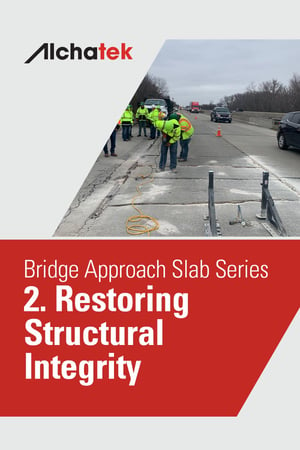
 Structural integrity often takes center stage when discussing the engineering behind bridges, leaving the bridge approach slabs in the periphery. Yet, the approach slabs bear significant loads, channel them effectively into the bridge structure, and play a crucial role in maintaining the structural integrity of the entire bridge system. When these slabs sink or become uneven, the ripple effect goes beyond vehicle safety, impacting the structural equilibrium of adjoining infrastructure. Thus, maintaining their integrity becomes a multi-faceted endeavor.
Structural integrity often takes center stage when discussing the engineering behind bridges, leaving the bridge approach slabs in the periphery. Yet, the approach slabs bear significant loads, channel them effectively into the bridge structure, and play a crucial role in maintaining the structural integrity of the entire bridge system. When these slabs sink or become uneven, the ripple effect goes beyond vehicle safety, impacting the structural equilibrium of adjoining infrastructure. Thus, maintaining their integrity becomes a multi-faceted endeavor.
The Ripple Effect on Infrastructure
A sinking or unstable bridge approach slab doesn't just create bumps or dips; it can negatively impact adjacent roadways, the bridge deck, and even substructures like piers and abutments. Any settling or misalignment in the approach slab can redistribute loads in an unintended manner, leading to stresses that can accelerate wear and tear on these adjoining structures. In a worst-case scenario, this can lead to a chain reaction that affects the long-term durability and safety of the bridge itself.
The Role of Polyurethane Foam in Structural Integrity
Polyurethane foam isn't just a tool for eliminating the notorious "bump at the end of the bridge." It serves a broader engineering purpose by restoring and enhancing the structural integrity of the bridge approach slabs and, by extension, the whole bridge system. The foam stabilizes the soil beneath the approach slab and levels it if necessary, providing a uniform base that effectively redistributes loads and alleviates undue stress on adjacent structures. Additionally, polyurethane foam offers a reliable long-term solution. Traditional methods might provide temporary relief but fail to address the root cause of the problem. By stabilizing the soil underneath the slab, polyurethane foam delivers a comprehensive solution that holds up under varying environmental conditions and load scenarios.
Analyzing Before Applying: The Role of Pre-Assessment
Before employing polyurethane foam, a thorough pre-assessment of the site conditions, the state of the approach slabs, and adjoining structures is crucial. This often involves techniques like ground-penetrating radar to detect soil instability beneath the slab, as well as load-distribution studies to understand how the existing slab interacts with the bridge and roadway. The data collected serves as a basis for the project plan.
The Application Process Detailed
Executing a stabilization project involves several meticulous steps. The first is drilling small holes in the approach slab at strategically determined locations. Next, using specialized equipment, polyurethane foam is injected underneath the slab. Technicians carefully monitor the injection process, controlling the rate and volume of foam to ensure adequate stabilization without over-expansion that could over-lift or damage the slab or adjacent structures. Once the slab is stabilized and leveled, the holes in the slab are sealed, restoring its original surface integrity.



